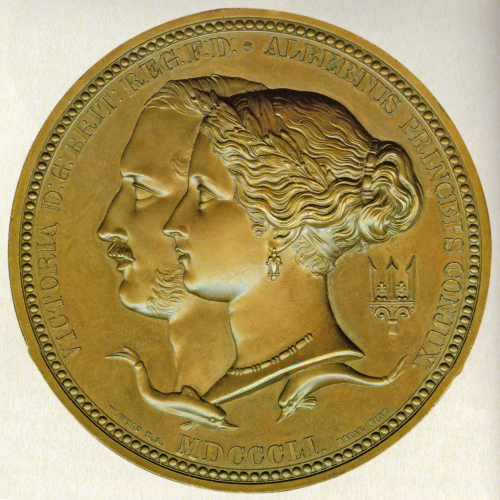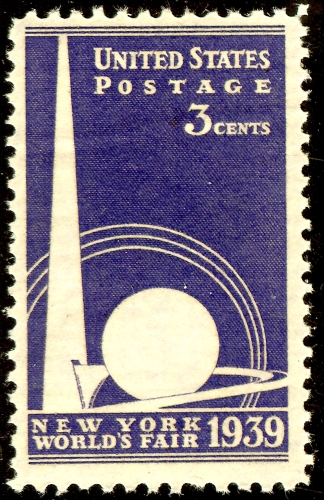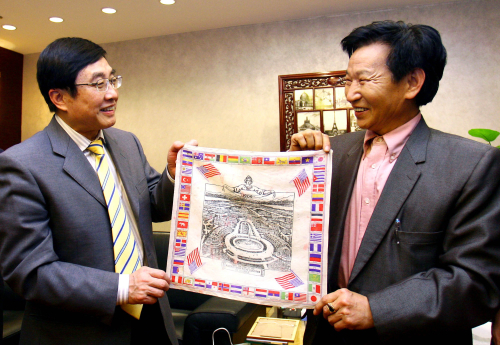Souvenirs of Expos past
Over the years, the World Expo has blossomed from being a stage mainly for displaying new inventions and industrial products to being a platform for global cultural exchange. Just looking at the exhibits from Expos of years past, one can get a good idea of the paths traveled by different countries over the last 150 years or so. In a sense, the various badges, medals, commemorative stamps and other memorabilia from previous Expos can also act as a snapshot of global culture over the last 150 years. Here's a look at some of the more popular souvenirs from previous Expos.
Mad for medals
Medals have been popular Expo collectibles since they first debuted at London's Great Exhibition of 1851. Medals were awarded to the best and most interesting exhibits; medals were inscribed with the winners' names, adding to their collectibility. They were often created by top designers of the times and minted by the state mints of the host country. The unique, innovative designs of these medals ensured that they would be collectible for decades. Since medals from older Expos are particularly rare, they command a high price among collectors and are prized by Expo enthusiasts.
|
|
Banking on coins and badges
In addition to the medals awarded to top exhibits, past Expos have also issued badges and memorial coins to participants as souvenirs. The first of these was issued at Chicago's World's Fair of 1893, also called the Columbian Exposition. To honor the 400th anniversary of Columbus's expeditions to America, the coin featured an engraved bust of Columbus and his sailing fleet. Paris's World Expo of 1900 featured a badge with an image of the country's Seine River on one side and a pair of torch- and laurel leaf-wielding angels on the opposing side. The badge was awarded to everyone that exhibited in the Expo.
Commemorative stamps
Commemorative stamps have also been popular Expo souvenirs in years past. The afore-mentioned Columbian Exposition featured a set of 16 commemorative stamps; each stamp featured a reproduction of a famous painting. These stamps were the first commemorative Expo stamps; it is nearly impossible to find a complete set these days. Every Expo since the Saint Louis World's Fair of 1904 has issued a set of commemorative stamps; Hanover's Expo 2000 featured a set of stamps featuring spacecraft, bullet trains and other modern innovations.
|
|
Ticket to ride
Expo admission tickets are among the most easily collected Expo souvenirs, since there are so many of them issued at every Expo. Tickets from Expos past have featured some innovative designs and even some hi-tech elements. Tickets from the 1900 World Expo featured the elegant architecture of the Champ de Mars public greenspace; the World's Fair of 1939 in New York used tickets depicting scenes of futuristic life in the city. Expo 2005, held in the Japanese city of Aichi, employed tickets with embedded microchips; the chips were used to prevent counterfeit ticketing. These chipped tickets also enabled Expo organizers to send emails with relevant Expo information directly to the mobile phones of ticket holders.
Passports pass the test
Expo passports were first issued at Expo '67 in Montreal; these passports were used as an entrance pass to the Expo Park. These souvenirs have proved to be incredibly popular since then; guests have used the passports to keep track of the different pavilions they have visited.
Ever since the passports debuted at Expo '67, it has been customary for participating countries and organizations to have their own unique seal to stamp on Expo passports. Visitors typically get one or two stamps on their passport after visiting a pavilion or exhibit; this allows guests to have a vivid record of their Expo experience. The seals have often featured design elements that represent a given country's culture and history. After visiting an Expo, guests could see their once-blank passports transformed into a mélange of emblems and symbols from around the world.
|
|
Still other souvenirs
Host countries and some of the larger participants at past Expos have always offered at least a few unique souvenirs that don't necessarily fall into other categories. Many of these rare items have become very valuable in the collectors' market.
A silk scarf from Seattle's Alaska-Yukon-Pacific Exposition of 1909 is one of those items. A Chinese-American painter, Qiao Wen'an, donated such a silk scarf to this year's Shanghai World Expo. This rare item depicts flags from the 51 countries and territories that participated in the 1909 Expo, including the flag of the Qing Dynasty (1636-1911), which still ruled China at the time.
Another Expo souvenir collector, Jiang Shiwei, has amassed a massive collection of such hard-to-find items. His Expo souvenir collection consists of a variety of belt buckles, plates, vases and other commemorative items. Jiang said his favorite collectibles include a set of glassware and a milk jug from the 1893 World's Fair. He said the original owner's name was printed in gold on the bottom of one glass. This was one of the "hi-tech" innovations of the glassware industry at the time, according to Jiang. "Such glassware represents the best of its kind; no wonder people love these Expo souvenirs!" he said.
|
|
 0
0 











Go to Forum >>0 Comments